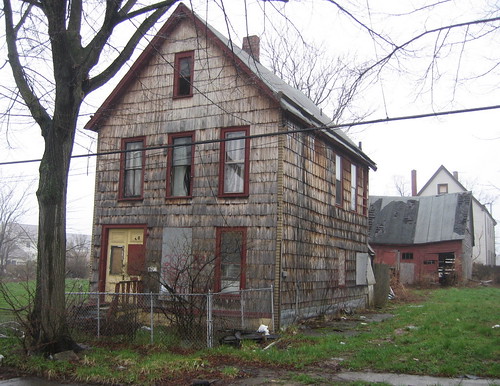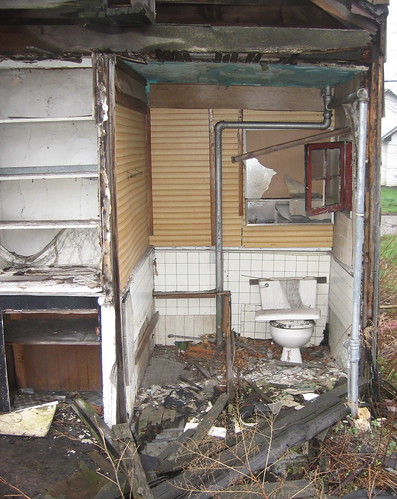I remember last year when Upstate New York was compared to Appalachia. Seems like that there was some push-back with that critique. Don't know if Buffalo has ever been used as a model for this criticism. Just in case someone wants to push it forward, I'll make a few pics available from Saturday's tour.
Here's the front.And around back, same house. No, this house is not located in Harlan County Kentucky!
Artspace • BAVPA • Tour d'Neglect - 2007 • Woodlawn Row Houses • faq • my flickr
the creativity exchange • CEOs for Cities

![IMG_6774[1]](http://farm1.staticflickr.com/229/477534409_edb609b71b_z.jpg)


6 comments:
interesting that in the second image the house has obviously been recently resided with cedar shingles. That is a high cost high quality material. That means that until very recently someone had high confidence in this neighborhood
Perhaps the contractor renovating the bathroom got a tad carried-away!
Is that a barn behind the house?
I'm often amazed at how much of a rural character Buffalo's urban fabric always had.
My great grandfather kept a horse in a barn behind the house his house on the lower east side. He also had an iron-smelting pit in the backyard, as he collected scrap metal and resold it as raw material.
any pics to share Denizen? sounds very interesting...
Denizen, just because you see a barn doesn't mean you're looking at a farm, as your grandfather's story indicates.
Once upon a time, this house had a bunch of similar neighbors on a densely built-up block. Buffalo, being such a large city before the introduction of the automobile, had substantial horse infrastructure. Those horses were kept in barns and liveries, many of which survive today.
The urban barn is completely undocumented in American architectural history. I would not be surprised if Buffalo has one of the largest surviving collections of them.
MJ, sorry :( It was demolished not too long after the family sold it way back in days the urban removal era, a.k.a. the 50s-60s.
Anon,
I did not mean rural (as in farms) in the literal sense!
I'm well aware of how densely built Buffalo's neighborhoods were. I'm just pointing out how Great Lakes and Midwestern cities tended to be built open and porous (detached houses with greenspace) as opposed their coastal counterparts where buildings/houses were attached in solid rows and placed right up to the street, lending itself to more of a "city" feel rather than the vibe of rural village.
Post a Comment